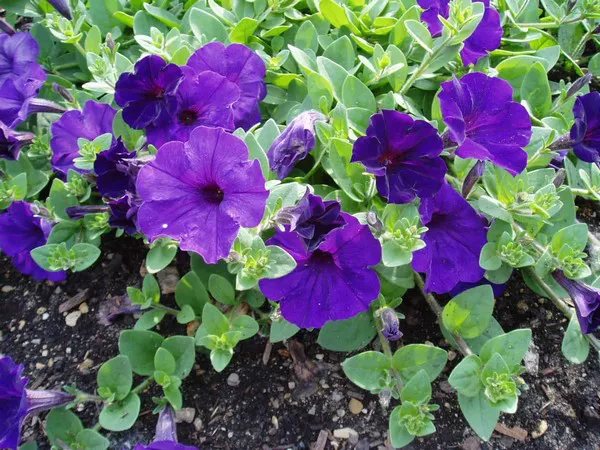Violets, with their delicate petals and enchanting fragrance, are a favorite among garden enthusiasts and floral aficionados. These charming flowers, whether from your garden or received as a gift, can be preserved through drying, allowing you to enjoy their beauty for an extended period. Drying violet flowers is a simple yet rewarding process that requires proper techniques to maintain their color, shape, and aroma. In this comprehensive guide, we delve into the art of preserving violet flowers and explore the methods, benefits, and creative uses for these dried botanical treasures.
Understanding the Importance of Drying Violet Flowers
Prolonged Beauty: Drying violet flowers enables you to enjoy their beauty long after they’ve been picked. Fresh violets have a limited lifespan, but dried violets can last indefinitely when properly preserved.
Versatility: Dried violet flowers can be incorporated into various crafts and projects, including potpourri, wreaths, sachets, and even culinary applications.
Memories and Sentiments: Dried violets hold sentimental value as keepsakes from special occasions or cherished moments in your garden.
Methods for Drying Violet Flowers
Air Drying: This traditional method involves hanging violet flowers upside down in a cool, dark, and well-ventilated area. Gather small bunches of violets and tie their stems together with a string. Hang them from a hook or a clothesline, ensuring they do not touch each other. This method allows the flowers to naturally lose moisture while retaining their color and shape. Air drying typically takes one to two weeks.
Pressing: Pressing violet flowers is a method that flattens the flowers and preserves their two-dimensional form. Place violets between layers of absorbent paper, such as parchment paper, in a flower press or heavy book. After a week or two, the pressed violets can be used for crafts, artwork, or decorative purposes.
Microwave Drying: For a quicker drying process, the microwave method can be employed. Place violets between layers of paper towels and microwave them at a low setting for short intervals (10-30 seconds). Check the flowers after each interval to avoid overheating. This method requires caution to prevent scorching the petals.
Tips for Successful Drying
Harvest at the Right Time: Choose fully bloomed violet flowers that are free from blemishes or signs of decay. The flowers should be at their peak of beauty and fragrance.
Avoid Direct Sunlight: Whether air drying or pressing, it’s crucial to keep the violet flowers away from direct sunlight, as this can cause fading and loss of color.
Maintain Proper Spacing: When air drying, ensure that the violet flowers are spaced apart to allow for adequate airflow. This prevents mold and promotes even drying.
Check for Dryness: With air drying, test the dryness of the flowers by gently touching the petals. If they feel brittle and papery, they are ready. Pressed violets should be completely dry to the touch and not show any signs of moisture.
Creative Uses for Dried Violet Flowers
Potpourri: Combine dried violet flowers with other dried botanicals to create fragrant potpourri. Add a few drops of essential oils to enhance the aroma.
Decorative Crafts: Incorporate dried violets into various crafts, such as making greeting cards, bookmarks, or framed artwork. Their vibrant colors and delicate appearance add elegance to any project.
Culinary Delights: Dried violet flowers can be used as edible decorations for cakes, pastries, and other culinary creations. They add a touch of elegance and a subtle floral flavor.
Sachets and Scented Items: Fill small fabric sachets with dried violet flowers to create fragrant sachets for closets, drawers, or as gifts. You can also infuse dried violets into homemade candles and soaps.
Wedding Keepsakes: Dried violet flowers can hold special significance as wedding keepsakes. They can be incorporated into wedding favors, invitations, or even as part of the bridal bouquet.
Preserving Color and Aroma
Light Protection: To maintain the vibrant color of dried violet flowers, store them in a dark or opaque container away from light exposure. This helps prevent fading.
Airtight Containers: Choose airtight containers to store dried violets. This helps preserve their fragrance and prevents them from absorbing moisture from the air.
Essential Oils: If the aroma of dried violet flowers fades over time, you can refresh them by adding a drop or two of violet-scented essential oil to the container.
Conclusion
Drying violet flowers is a wonderful way to capture and prolong their beauty, fragrance, and charm. By following proper techniques and methods, you can successfully preserve these delicate blooms for a variety of creative purposes. Whether you choose to create decorative crafts, fragrant potpourri, or edible delights, the art of drying violet flowers allows you to savor the essence of nature’s elegance throughout the seasons. As you embark on this journey of preserving violet flowers, remember that each dried petal holds a piece of nature’s wonder and your own artistic inspiration.


